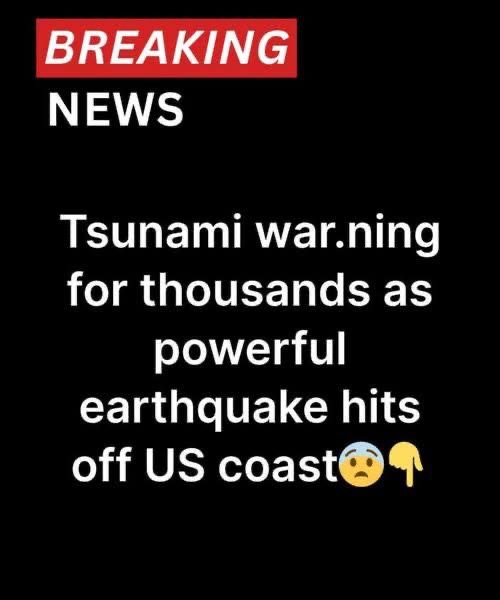Massive 7.3 Earthquake Forces Thousands to Evacuate as Tsunami Warnings
When the ground began shaking violently beneath Alaska’s southern coastline Wednesday afternoon, thousands of residents knew exactly what to do—run for higher ground.
The powerful tremor that rattled the region triggered immediate tsunami warnings, sending coastal communities into emergency mode as sirens wailed and evacuation orders echoed across radio waves and smartphone alerts.
The Earthquake That Shook Alaska
At precisely 12:38 p.m. local time on Wednesday, July 16, 2025, a devastating 7.3 magnitude earthquake struck the waters off southern Alaska. The United States Geological Survey quickly identified the epicenter as being located in the Pacific Ocean, approximately 65 miles southeast of Sand Point, near the remote Shumagin Islands along the Alaska Peninsula. This powerful seismic event sent shockwaves through the region, both literally and figuratively, as communities braced for what could have been a catastrophic natural disaster.
The earthquake’s intensity was immediately apparent to residents across the affected region. Buildings swayed, windows rattled, and the unmistakable rolling motion of a significant seismic event left no doubt that this was a major geological occurrence. Within minutes of the initial tremor, seismic monitoring stations across Alaska and the Pacific Northwest began registering the earthquake’s magnitude and potential implications.
Dr. Sarah Chen, a seismologist with the University of Alaska Fairbanks, explained the significance of the event: “A 7.3 magnitude earthquake is considered major on the Richter scale. When it occurs beneath or near ocean waters, as this one did, the potential for tsunami generation becomes a serious concern that requires immediate action from emergency management officials.”
Immediate Response and Evacuation Efforts
The Alaska Tsunami Warning Center, operated by the National Oceanic and Atmospheric Administration, wasted no time in issuing comprehensive tsunami warnings for coastal areas stretching from the Kennedy Entrance near Homer to Unimak Pass near Unalaska. The warning zone encompassed approximately 700 miles of Alaska’s southern coastline, affecting thousands of residents in both major population centers and remote coastal villages






